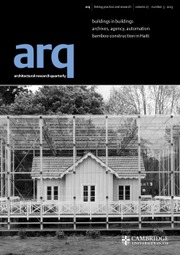No CrossRef data available.
Article contents
Up-island architecture and the artefacts of Deaf utopia
Published online by Cambridge University Press: 03 November 2025
Extract
Since the American Deaf community’s formation in the early nineteenth century, ‘Deaf utopias’ have emerged across a wide range of tangible and fictional manifestations. These utopias have presented, on the one hand, as a fully accessible world in which deaf and hard-of-hearing individuals are integrated into the mainstream and, on the other, as a Deaf-centric world in which all or most inhabitants are Deaf and deafness constitutes the norm. These varied integrationist and separatist orientations have become spatially manifest, most notably, in the cultural narratives of ‘Eyeth’, John Jacobus Flournoy’s 1850s ‘Scheme for a Deaf Commonwealth’, Douglas Bullard’s 1986 novel Islay, and the signing community in Chilmark, Massachusetts, on the island of Martha’s Vineyard.
This article investigates the ‘up-island’ town of Chilmark as a site of cultural fantasy within the American Deaf community, positing its history as spatially expressive of enduring political ambivalences within American Deaf culture - namely, internal debates about the community’s desired cultural position relative to the mainstream. Chilmark’s most definitive spatial artefacts, including buildings in its town center, its transportation infrastructure, rural character, and isolated geography, are here analysed and subsequently compared with parallel Deaf utopias, aiming to situate Chilmark within a broader Deaf-utopian legacy.
Building on existing accounts of Chilmark’s signing community (Nora Ellen Groce, Everyone Here Spoke Sign Language, 1985) and literary analyses of ‘Deaf utopia’ (Kristen Harmon, ‘Beyond Islay: A Brief Literary History of Deaf Utopia and Dystopia’, 2023), as well as the architectural scholarship of Jeffrey Mansfield (‘The Architecture of Deafness’, 2017) and Hansel Bauman (‘DEAFSPACE: An Architecture Towards a More Livable and Sustainable World’, 2014), this article further elaborates on the politically ambiguous meaning of ‘Deaf space’ and ‘Deaf utopia’ by critically examining some of the Deaf community’s most prominent spatial artefacts.
Information
- Type
- Full Paper
- Information
- Copyright
- © The Author(s), 2025. Published by Cambridge University Press

